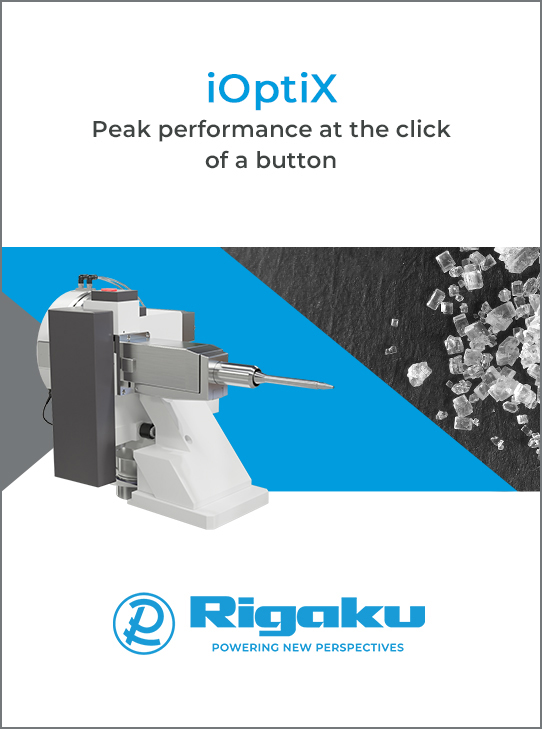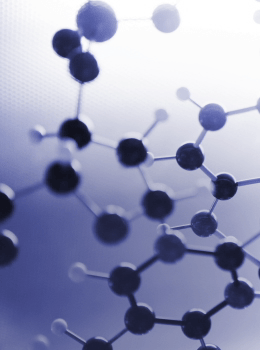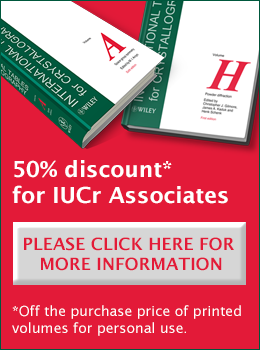


Obituary
Raimond B. G. Ravelli (1968–2023)
![Thumbnail [Thumbnail]](https://www.iucr.org/__data/assets/image/0006/157155/thumbnail.jpg)
Raimond on beamline ID14-4, ESRF, Grenoble, France, 2002/2003. Photo credit: EMBL, Grenoble.
On 11 July 2023 in a beautiful and full chapel in Maastricht, the Netherlands, we remembered and bade farewell to a much-loved colleague and friend, Raimond Ravelli, who died on 30 June after a sudden unexpected 10-week illness. Raimond was a highly creative structural biologist who contributed hugely to the field. The bare facts of Raimond’s far too short 55-year life give no indication of the profound impact of his innovations in X-ray crystallography and electron microscopy methodology, and make it easy to underestimate his own seminal contributions in answering numerous scientific questions in structural biology. More importantly though, facts cannot tell of the profound inspiration he gave to those fortunate to be his colleagues, collaborators and mentees.
Raimond was born in De Bilt, near Utrecht, the youngest of three children. His nickname was ‘Kikvors’ (‘frog’) because he was always ready to jump and to surprise. He loved to read and build with LEGO (a fascination he retained all his life), but at school it soon became clear how intelligent he was. His scientific talent and passion surfaced as a teenager and at the age of 18 he participated in the finals of the Netherlands National Chemistry Olympiad. He performed best under pressure and in fact he later seemed to seek that pressure in his research life too. He loved to perform experiments, so it was no surprise to his family when he decided to study chemistry at the University of Utrecht, graduating in 1992 despite his extensive commitment to his rowing crew. Raimond stayed in Utrecht for his PhD research under the supervision of Henk Krabbendam and Jan Kroon, working on X-ray data-collection techniques, particularly Laue methodology (Ravelli et al., 1999). His PhD was awarded in 1998 for a thesis entitled Laue Diffraction and Fast Monochromatic X-ray Data Collection Techniques. One of his thesis projects was to write the brilliant STRATEGY software program (Ravelli et al., 1997) which allowed efficient X-ray diffraction data-collection strategies to be computed and utilized. This was widely adopted by the worldwide crystallographic community, making Raimond’s name well known to many. While writing his thesis, Raimond also developed a keen interest in the structure and mechanism of the acetylcholinesterase enzyme, in close collaboration with the groups of Joel Sussman and Israel Silman at the Weizmann Institute of Science in Rehovot, Israel, which bore fruit on a number of joint projects (Ravelli, Raves et al., 1998; Ravelli, Hezemans et al., 1996; Harel et al., 1995), and continued to attract his interest for many years afterwards (Harel et al., 2004, 2007).
Following his move in 1998 to the EMBL Outstation in Grenoble, France, first as a postdoctoral fellow, then as a staff scientist and ultimately as a Team Leader, Raimond grew to be a widely recognizable expert in crystallographic data collection. As a member of the ESRF–EMBL Joint Structural Biology Group, under the guidance of Sean McSweeney he undertook the careful optimization of the first undulator beamline at the ESRF dedicated to macromolecular X-ray crystallography: ID14-4. Their efforts resulted in this beamline becoming the first choice for data collection runs for many crystallographers, to the extent that, to my knowledge, it is the only beamline to have a day-long symposium or ‘wake’ organized for it in February 2014 after it had sadly been dismantled. This event reflected the great respect of the community for both the technical achievements and the significant impact of the scientific results that had been obtained on ID14-4. For instance, the beamline was instrumental in determination of the structure of the 30S ribosome, which was awarded the Nobel Prize for Chemistry in 2009. In fact, two of the three Nobel awardees used ID14-4: Ada Yonath privately tutored Raimond on ribosomes and Venkatraman Ramakrishnan acknowledged Raimond in his seminal Nobel article. Raimond was the beamline responsible and he worked very hard, day and night, with great patience and good humour to help numerous colleagues collect high-quality diffraction data at the highest scientific standard. He instigated the installation of the first on-line microspectrophotometer (McGeehan et al., 2009), and then oversaw its redesign and improvement, making it possible for less expert users to take measurements. He also steered the development of the ‘Mini Kappa goniometer head’ with Florent Cipriani and colleagues at the EMBL (Brockhauser et al., 2013) to allow users to orient crystals for optimal X-ray diffraction results. He thus put his exceptional scientific gifts and experimental talents to good use for many colleagues.
From his observations of diffraction degradation suffered by cryo-cooled crystals on the beamline, Raimond developed a keen interest in radiation damage (RD). With Sean McSweeney and Joel Sussman they investigated the phenomenon in detail, publishing two seminal papers entitled The ‘fingerprint’ that X-rays can leave on structures (Ravelli & McSweeney, 2000) and Specific chemical and structural damage to proteins produced by synchrotron radiation (Weik, Ravelli et al., 2000). Raimond also analysed and published a paper on unit-cell expansion effects (Ravelli et al., 2002) in the first Journal of Synchrotron Radiation special issue on RD, combining papers collected together following the Second International Workshop on RD in crystalline biological samples. Raimond was a very regular contributor to this series of workshops, held biennially from 1999 (1st) to 2020 (11th), and was one of the Organizing Committee members from 2003 onwards, reviewing the RD landscape in 2006 (Ravelli & Garman, 2006).
It became evident from RD investigations at the ESRF that the damage rate to cryo-cooled crystals was dependent on the absorbed dose, a parameter which can be estimated from knowledge of the beam conditions and crystal constituents but cannot be measured. Raimond thus wrote a computer program called RADDOSE to calculate absorbed dose, and this was further developed in collaboration with us and then released to be used by many researchers (Murray et al., 2004). It was later rewritten in Java and released as the current RADDOSE-3D.
Raimond was a lateral thinker of great originality, and always thought outside the box. His scientific curiosity and enthusiasm were contagious and inspirational to many of us, and were the seed of many new projects. Often, Raimond’s ideas went beyond his core scientific interests, thereby fertilizing and connecting different disciplines and various areas of research. He recognized that the RD effects led to specific changes in the structure factors measured, leading him to contribute to data-reduction methods, particularly zero-dose extrapolation (Diederichs et al., 2003). Furthermore, he realized that the specific RD to disulfide bonds and acidic amino acids in cryo-cooled crystals could be used as a phasing signal if data sets before and after an X-ray (or UV laser) ‘burn’ were collected. Thus Radiation damage Induced Phasing (RIP) was born (Ravelli et al., 2003; Nanao et al., 2005; Ravelli et al., 2005) and contributed to some important structure solutions (e.g. Rudiño-Piñera et al., 2007). There were two features of ID14-4 that made it particularly suitable for systematic radiation damage studies: the beam had an approximately top-hat profile and the X-ray flux was continuously monitored using an in-line foil with a diode above it, with the values being written into the image headers. As well as studying RD to protein crystals, Raimond also investigated RD to DNA using Raman spectroscopy (McGeehan et al., 2007).
During his time at EMBL, in conjunction with developing novel methods, Raimond led and participated in a number of exciting structural biology projects. Notable among these was work on the assembly of tubulin and its mechanism of regulation (Dorléans et al., 2009), featuring two papers published in Nature (Ravelli et al., 2004; Gigant et al., 2005). The crystal structure determination of the rabies virus nucleoprotein-RNA complex (Albertini et al., 2006) published in Science and of the human Slit-Robo complex (Morlot et al., 2007) were among other impactful results. Clearly, he was often called upon to tackle the most challenging, seemingly intractable, and thus to Raimond the most interesting, problems.
It was a joy to work with Raimond but it could also be tough, especially when there was some sort of deadline involved, since he had rather a ‘flexible’ approach to deadlines. He would speak up when he agreed, but also when he disagreed; in both cases with a wide and sincere smile. Consequently, differences of opinion were met head on and discussed with disarming honesty in a determined effort to sort out the issues for the good of all parties. Thus, any misunderstandings could be sorted out, resulting in very strong and productive collaborations which often developed into equally strong and enduring friendships.
Grenoble sits in a cradle of spectacular scenery, and Raimond loved to be outdoors on bike rides and mountain hikes. When he was not working crazy day- and night-time hours, he made the most of these opportunities and there are many stories of adventures experienced by visiting researchers when they went on outings with Raimond. A special feature of trips with him was that he absolutely refused to come back the same way that he went. Legendary were his ‘shortcuts’, defined as the least straightforward way to connect two points on the map. A very particular such shortcut was related by Martin Weik at the memorial service: ‘Whoever worked with Raimond needed to be prepared for adventure, not only in, but also outside the lab. Legendary were the sledging hikes, during which Raimond took colleagues and friends through deep snow in the alps, inviting them to sledge down on little plastic sledges for children. When I realized that the slope felt almost vertical, I politely declined and offered to drive the car down the mountain to greet them there. On my way down, all of a sudden, a huge cloud of snow fell in front of my car, but luckily, I just stopped in time. In the middle of the road, there was Raimond with a colleague, excited that he found this adventurous shortcut down the mountain.’.
Raimond moved back to the Netherlands in 2007 after being awarded a prestigious VIDI award (a personal grant reserved for the most promising young research leaders) by the NWO (The Dutch Research Council). He took up a position as an Assistant Professor at Leiden University Medical Center (LUMC). The impetus for this move was that with amazing predictive power and vision, and well before the current revolution in electron microscopy (EM), he realized that the focus of his research should be redirected from crystallography to cryo-EM, even while maintaining his abiding interest in structural biology. Making this change years before many others also judged this to be a wise move, he was well ‘ahead of the pack’ (much like his position during many cycling tours in the Grenoble mountains). He made significant contributions and became a very well respected member of the new community, making important progress in optimizing the new capabilities of cryo-EM. This included methods to characterize the new CCD cameras (Vulovic et al., 2010) and to control the rate of RD (Karuppasamy et al., 2011), since this is also a limiting factor in cryo-EM structure determination.
One of Raimond’s major achievements during his time at the LUMC was to combine 20 000 EM images to obtain an entire, very detailed multi-scale image of a zebrafish embryo (Faas et al., 2012), earning him a place in the Guinness Book of World Records for the largest digital image (281 gigapixels!). It was on display for some years in the Naturalis Biodiversity Center in Leiden.
In 2014 he moved as an Associate Professor to Maastricht University in the newly formed Maastricht Multimodal Molecular Imaging Institute (M4I), to continue his work in cryo-EM and help build the Institute of Nanoscopy (IoN). He developed improved approaches for optimizing cryo-EM studies, inventing several advanced techniques to allow efficient sample preparation such as pin printing to substantially reduce sample waste, and reducing sample evaporation using dewpoint control feedback loops (Ravelli et al., 2020). He was particularly proud of the development of Vitrojet, a highly original device for automated cryo-EM sample preparation, and he held several patents for his inventions.
During his time at Maastricht University, Raimond elucidated the structure of beta-amyloid fibrils (Gremer et al., 2017), and was part of the team who showed that SARS-CoV-2 can productively infect human gut enterocytes (Lamers et al., 2020), both studies being published in Science. Raimond also pursued tomographic methods (Berger et al., 2023), putting to use his earlier experience on ID14-4 to image crystals (Brockhauser et al., 2008), and he continued his radiation damage investigations particularly on the effects of dose in single-particle cryo-EM (Zhang et al., 2021).
In November 2022, Raimond was appointed to a Full Professorship in Structural Biology at Maastricht University. His inauguration speech (Oratie) was the occasion to showcase his talent as speaker and communicator to a wider audience. His speech, given to a packed auditorium of colleagues, family and friends, is a Musing on Nanobiology and is available at https://www.youtube.com/watch?v=Gv3pKRp5S2Y&t=667s. Raimond’s enthusiasm and passion for science emanated from him and was an inspiration to all those present. The Oratie included the first showing of his SARS-CoV-2 lifecycle animation, made in collaboration with Kèvin Knoops, Montserrat Barcena and Jeroen Claus; the animation has already won 15 different awards for design and science education. It can also be found here: https://www.youtube.com/watch?v=XlOi2hVGtg0. However, the voice on YouTube which describes the lifecycle is of course not Raimond’s but is my own: I was most honoured when he asked me to go to London and record it at a professional studio. Raimond’s attention to detail when writing the script was, as always, particularly impressive.
![[Fig. 1]](https://www.iucr.org/__data/assets/image/0007/157156/me6242fig1.jpeg)
Raimond was not only a brilliant scientist but also a thoughtful and inspiring mentor and a much-appreciated colleague at the EMBL, ESRF, LUMC and Maastricht University, as well as in the wider structural biology community. His students remark on his exceptional mentorship and teaching skills; his colleagues know him for his enormous enthusiasm and passion for science, his generosity, inclusivity and humility. He will be greatly missed by his colleagues and collaborators, and also by his many friends around the world, for whom knowing him was a privilege and inspiration. Raimond’s legacy to those he trained and mentored throughout his career will certainly live on.
Raimond leaves behind him his partner Maaike de Backer, and their son Seppe and daughter Noé. The structural biology community extend their deep sympathy to them for their loss.
Postscript: personally, I will remember Raimond as firstly a very kind, treasured and supportive friend who happily attended my daughter’s orchestral concerts in Leiden and London, and who came to Oxford both for my husband’s funeral and also for my retirement event. Secondly, I will never forget his great integrity and high standards as a scientist, even if that meant spending two hours in the middle of my night on a phone call with him to finish editing one of our joint papers when I was in Australia. Rest in peace, dear Raimond, the world is a better place because you were in it.
Acknowledgements
I am very grateful to the following people for kindly reading and commenting on the text above, some of the information and words for which were taken from their various contributions: Maaike de Backer, Andrew McCarthy, Sean McSweeney, Anastassis (Tassos) Perrakis, and Martin Weik.
References
Albertini, A. A. V., Wernimont, A. K., Muziol, T., Ravelli, R. B. G., Clapier, C. R., Schoehn, G., Weissenhorn, W. & Ruigrok, R. W. H. (2006). Science, 313, 360–363.
Berger, C., Premaraj, N., Ravelli, R. B. G., Knoops, K., López-Iglesias, C. & Peters, P. (2023). Nat. Methods, 20, 499–511.
Brockhauser, S., Ravelli, R. B. G. & McCarthy, A. A. (2013). Acta Cryst. D69, 1241–1251.
Diederichs, K., McSweeney, S. & Ravelli, R. B. G. (2003). Acta Cryst. D59, 903–909.
Dorléans, A., Gigant, B., Ravelli, R. B. G., Mailliet, P., Mikol, V. & Knossow, M. (2009). Proc. Natl Acad. Sci. USA, 106, 13775–13779.
Faas, F. G. A., Avramut, M. C., van den Berg, B., Mommaas, A. M., Koster, A. J. & Ravelli, R. B. G. (2012). J. Cell Biol. 198, 457–469.
Gigant, B., Wang, C., Ravelli, R. B. G., Roussi, F., Steinmetz, M. O., Curmi, P. A., Sobel, A. & Knossow, M. (2005). Nature, 435, 519–522.
Gremer, L., Schölzel, D., Schenk, C., Reinartz, E., Labahn, J., Ravelli, R. B. G., Tusche, M., Lopez-Iglesias, C., Hoyer, W., Heise, H., Willbold, D. & Schröder, G. F. (2017). Science, 358, 116–119.
Harel, M., Aharoni, A., Gaidukov, L., Brumshtein, B., Khersonsky, O., Meged, R., Dvir, H., Ravelli, R. B. G., McCarthy, A., Toker, L., Silman, I., Sussman, J. L. & Tawfik, D. S. (2004). Nat. Struct. Mol. Biol. 11, 412–419.
Harel, M., Brumshtein, B., Meged, R., Dvir, H., Ravelli, R. B. G., McCarthy, A., Toker, L., Silman, I. & Sussman, J. L. (2007). Arh. Hig. Rada Toksikol. 58, 347–353.
Harel, M., Kleywegt, G. J., Ravelli, R. B. G., Silman, I. & Sussman, J. L. (1995). Structure, 3, 1355–1366.
Lamers, M. M., Beumer, J., van der Vaart, J., Knoops, K., Puschhof, J., Breugem, T. I., Ravelli, R. B. G., van Schayck, J.P., Mykytyn, A. Z., Duimel, H. Q., van Donselaar, E., Riesebosch, S., Kuijpers, H. J. H., Schipper, D., van de Wetering, W. J., de Graaf, M., Koopmans, M., Cuppen, E., Peters, P. J., Haagmans, B. L. & Clevers, H. (2020). Science, 369, 50–54.
Morlot, C., Thielens, N. M., Ravelli, R. B. G., Hemrika, W., Romijn, R. A., Gros, P., Cusack, S. & McCarthy, A. A. (2007). Proc. Natl Acad. Sci. USA, 104, 14923–14928.
Murray, J. W., Garman, E. F. & Ravelli, R. B. G. (2004). J. Appl. Cryst. 37, 513–522.
Nanao, M. H., Sheldrick, G. M. & Ravelli, R. B. G. (2005). Acta Cryst. D61, 1227–1237.
Ravelli, R. B. G. & Garman, E. F. (2006). Curr. Opin. Struct. Biol. 16, 624–629.
Ravelli, R. B. G., Gigant, B., Curmi, P. A., Jourdain, I., Lachkar, S., Sobel, A. & Knossow, M. (2004). Nature, 428, 198–202.
Ravelli, R. B. G., Leiros, H. K., Pan, B., Caffrey, M. & McSweeney, S. (2003). Structure, 11, 217–224.
Ravelli, R. B. G. & McSweeney, S. M. (2000). Structure, 8, 315–328.
Ravelli, R. B. G., Nijpels, F. J. T., Henderikx, R. J. M., Weissenberger, G., Thewessem, S., Gijsbers, A., Beulen, B. W. A. M. M., López-Iglesias, C. & Peters, P. J. (2020). bioRxiv, 651208.
Rudiño-Piñera, E., Ravelli, R. B. G., Sheldrick, G. M., Nanao, M. H., Korostelev, V. V., Werner, J. M., Schwarz-Linek, U., Potts, J. R. & Garman, E. F. (2007). J. Mol. Biol. 368, 833–844.
Weik, M., Ravelli, R. B. G., Kryger, G., McSweeney, S., Raves, M. L., Harel, M., Gros, P., Silman, I., Kroon, J. & Sussman, J. L. (2000). Proc. Natl Acad. Sci. USA, 97, 623–628.
This obituary was originally published in Acta Cryst. (2023). D79, 866–870.
Copyright © - All Rights Reserved - International Union of Crystallography







